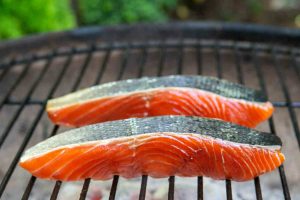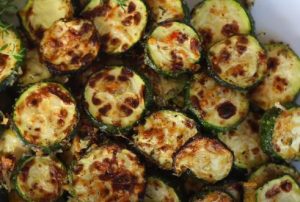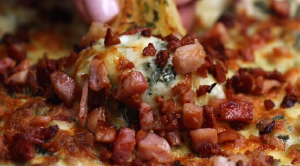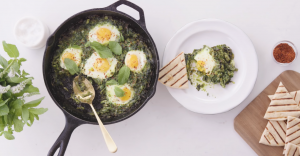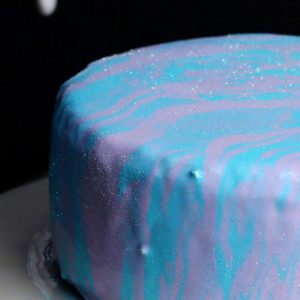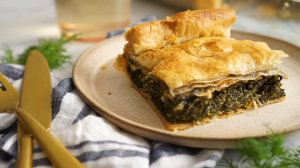The succulent, flavorful sous vide teriyaki salmon is a delight for seafood lovers. The sous vide method, which literally means 'under vacuum' in French, involves sealing food in a bag and cooking it in water bath under precise temperatures. This method helps to retain the flavors and juices of the salmon, and when combined with the tangy-sweet teriyaki sauce, it turns into a mouthwatering dish.
Many of the ingredients for this recipe are staples in most kitchens, like garlic and ginger. However, some may not be as commonly found. Soy sauce, brown sugar, and rice vinegar are key ingredients for the teriyaki sauce, which you can find in the Asian aisle of most supermarkets. Cornstarch, used to thicken the sauce, is usually available in the baking section. Also, if you don't have a sous vide device, don't worry. There are many 'hack' methods available online that you can use.
Sous Vide Teriyaki Salmon Ingredients
Salmon: This is the main ingredient of the dish. Opt for fresh, high-quality fillets for the best flavors.
Garlic: Adds aromatic and robust flavor to the dish.
Ginger: Gives a spicy, slightly sweet flavor that pairs well with salmon.
Soy sauce: The fundamental element of teriyaki sauce, it gives a salty, umami taste.
Water: Used to dilute the sauce for a balanced taste.
Brown sugar: Adds sweetness to counterbalance the salty soy sauce.
Rice vinegar: Provides a tangy element to the teriyaki sauce.
Cornstarch: Used to thicken the sauce to the right consistency.
Green onions: Used for garnishing and adds a bit of fresh, mild onion flavor.
One reader, Abeu Vickers says:





This sous vide teriyaki salmon recipe is a game-changer! The salmon turns out incredibly tender and flavorful, and the teriyaki sauce is just perfect. It's so easy to make and always impresses my guests. I highly recommend trying it out for a delicious and hassle-free meal.
Mastering the Techniques for Sous Vide Teriyaki Salmon
How to sous vide salmon: This technique involves vacuum-sealing the salmon in a bag and cooking it in a water bath at a precise temperature for a specific duration to achieve a perfectly cooked, tender texture.
How to make teriyaki marinade: This involves whisking together soy sauce, water, brown sugar, and rice vinegar to create a flavorful and savory marinade for the salmon.
How to thicken teriyaki sauce: This technique involves using cornstarch to thicken the teriyaki marinade into a sauce by microwaving it in short bursts and whisking until it reaches the desired consistency.
How to sear salmon skin: This technique involves heating oil in a skillet and searing the salmon, skin-side down, to achieve a crispy and flavorful skin.
How To Make Sous Vide Teriyaki Salmon
For this sous vide teriyaki salmon, the fish is marinated in sugar, soy sauce, and garlic, sealed, then cooked in a warm bath until tender and ready.
Serves:
Ingredients
- 2lbssalmon,or salmon fillets, 1-inch thick
- 4clovesgarlic,(about 4 tsp), minced
- 4tspginger,(1-inch pc), peeled and minced
- ¼cupsoy sauce,or gluten-free tamari
- ¼cupwater
- 2tbspbrown sugar
- 2tbsprice vinegar,or white wine vinegar
- 2tspcornstarch,for thickening the sauce
- sliced green onions,or chopped cilantro, to serve
Instructions
-
Pull out 4 freezer bags and label each bag with the recipe and the basic cooking instructions. Flip the zip-top edge of the bag outward, forming a cuff around the bag to keep it stay open and upright.
-
Fill a large bowl or stockpot with 4 or 5 inches of water. Layout a kitchen towel.
-
Whisk together the soy sauce, water, brown sugar, and vinegar for the marinade.
-
Cut the salmon into 4 portions (if not already done). Aim for equal portions, though it’s fine if they are different shapes.
-
Divide the garlic and ginger between the fillets (about 1 teaspoon of each per fillet). Use fingers to spread the garlic and ginger evenly over the surface of the salmon to help them stick after the teriyaki marinade is added.
-
Slide one fillet into each bag. Usually, the fillets fit in the bottom of the bag, but it’s fine if they are sideways.
-
Holding the bag upright, add about 3 tablespoons of marinade to the bag. Flip the cuff back up and seal the bag almost closed, leaving about an inch un-zipped.
-
Holding the bag by the unzipped portion, submerge the bag in the pot of water. Use the other hand to gently press out any air pockets from around the salmon.
-
Lower the bag right up to the unzipped portion so that all the air bubbles are forced out, then pinch the bag closed.
-
Lift the bag out of the water; the plastic should hug the sides of the salmon, pressing right up against the fish. If it doesn’t, or if there are big air bubbles around the salmon, repeat sealing the bag.
-
Transfer the bag to the kitchen towel and pat dry. Repeat with adding the marinade and sealing the remaining freezer bags of salmon.
-
If desired, skip to the next step and cook the salmon right away. Otherwise, freeze the salmon overnight or up to 3 months. The marinade will become opaque but may not completely solidify; this is normal. If eating the salmon within a few days, freezing is recommended so that the fish doesn’t over-marinate.
-
When ready to cook, heat the sous vide bath. Fill a large pot with at least 6 inches of water. Add the Joule (or other sous vide device) and heat the water to 122 degrees F for silky, very tender salmon, or to 130 degrees F for a more firm and flaky salmon.
-
Once the sous vide bath is heated, add as many salmon fillets as desired to cook. (Do not thaw frozen salmon.) It’s fine if the tops of the bags poke out from the surface of the water, but the salmon itself should be completely submerged. Add additional water if needed to cover.
-
Cook fresh (unfrozen) salmon for about 40 minutes, or cook frozen salmon for 70 minutes (the cooking time is the same whether cooking at 122 degrees F or at 130 degrees F).
-
Salmon can be left in the sous vide bath for up to 30 minutes after the end of cooking without significant change in flavor or texture (after 30 minutes, it starts to get a little mushy).
-
When done, pull all the bags from the water and lay them on a kitchen towel. Pat the bags dry.
Teriyaki Sauce:
-
Holding the bag over a microwave-safe measuring cup, snip one of the corners of the bag and empty the teriyaki marinade into the cup.
-
Add water as needed to have ¼ cup of liquid for every salmon fillet prepared. Whisk in ½ teaspoon of cornstarch for every ¼ cup of liquid.
-
Microwave on high in 30-second bursts, whisking between each burst until the sauce thickens and bubbles around the edges (about 30 seconds for each quarter cup). If it doesn’t seem to be thickening, whisk in another ¼ teaspoon of cornstarch for each ¼ cup and continue heating.
To Serve:
-
While the sauce is heating, slide each salmon fillet out of its bag and onto a plate.
-
For a crispy skin (optional), warm a tablespoon of oil in a large skillet over medium-high heat and sear the salmon, skin-side down, for a few minutes or until the skin is browned and crispy.
-
Transfer each fillet to a plate, drizzle each one with sauce, and sprinkle with sliced green onions or chopped cilantro. Serve warm.
Nutrition
- Calories: 509.89kcal
- Fat: 30.56g
- Saturated Fat: 6.94g
- Monounsaturated Fat: 8.57g
- Polyunsaturated Fat: 8.87g
- Carbohydrates: 7.80g
- Fiber: 0.24g
- Sugar: 4.53g
- Protein: 47.85g
- Cholesterol: 124.74mg
- Sodium: 1012.16mg
- Calcium: 36.10mg
- Potassium: 919.14mg
- Iron: 1.11mg
- Vitamin C: 9.88mg
Expert Technique Tips for Perfecting Sous Vide Teriyaki Salmon
When preparing the salmon for the sous vide, ensure that the bag is properly sealed with minimal air inside. This is crucial for the sous vide cooking process as it ensures even cooking and prevents the bag from floating in the water bath. If you find it difficult to remove all the air, try the water displacement method: partially seal the bag, then slowly lower it into a water bath. The water pressure will push out the air, allowing you to fully seal the bag. This method can help achieve a vacuum-sealed effect without the need for a vacuum sealer.
Time-Saving Tips for Making Sous Vide Teriyaki Salmon
Prep ahead: Marinate the salmon in advance and freeze it for later use. This way, you can simply defrost and cook when ready, saving time on prep work.
Use pre-minced garlic and ginger: Opt for pre-minced garlic and ginger to cut down on prep time and make the recipe more convenient.
Substitute Ingredients For Sous Vide Teriyaki Salmon Recipe
salmon - Substitute with arctic char: Arctic char is a similar fish with a mild, delicate flavor and a texture that is comparable to salmon, making it a great substitute for sous vide cooking.
garlic - Substitute with shallots: Shallots have a mild, sweet flavor that can provide a similar aromatic base to the dish, complementing the teriyaki sauce.
ginger - Substitute with lemongrass: Lemongrass offers a citrusy, herbal flavor that can add a unique twist to the teriyaki marinade, enhancing the overall profile of the dish.
soy sauce - Substitute with tamari: Tamari is a gluten-free alternative to soy sauce that offers a rich, savory flavor, perfect for creating a gluten-free version of the teriyaki marinade.
brown sugar - Substitute with honey: Honey can provide a natural sweetness and a hint of floral notes, adding depth to the teriyaki marinade while also acting as a natural caramelizer during the cooking process.
rice vinegar - Substitute with apple cider vinegar: Apple cider vinegar offers a slightly fruity and tangy flavor that can work well in the teriyaki marinade, providing a subtle sweetness and acidity to balance the dish.
cornstarch - Substitute with arrowroot powder: Arrowroot powder can be used as a thickening agent in place of cornstarch, providing a similar silky texture to the teriyaki sauce without altering the flavor profile.
green onions - Substitute with chives: Chives can offer a mild onion flavor and a pop of color, serving as a suitable garnish for the sous vide teriyaki salmon dish.
Presenting Your Sous Vide Teriyaki Salmon Masterpiece
Elevate the plating: When presenting the sous vide teriyaki salmon, focus on creating an elegant and visually appealing plate. Use clean lines and minimalistic design to showcase the star of the dish - the perfectly cooked salmon.
Incorporate vibrant colors: Introduce pops of color to the plate with vibrant garnishes such as microgreens, edible flowers, or thinly sliced radishes. These elements not only add visual appeal but also freshness to the dish.
Utilize negative space: Embrace the concept of negative space on the plate to allow the salmon to stand out. This will create a sense of balance and sophistication in the overall presentation.
Employ geometric shapes: Consider using geometric shapes and patterns to arrange the components of the dish. This modern approach adds a touch of artistry to the plating.
Highlight the glaze: Showcase the glistening teriyaki glaze by carefully brushing it onto the salmon in a manner that catches the light, emphasizing the glossy finish.
Add textural contrast: Introduce textural contrast by incorporating elements such as crispy lotus root chips or delicate sesame tuiles to complement the tender salmon.
Incorporate Asian-inspired elements: Infuse the presentation with subtle Asian influences by incorporating elements like bamboo leaves or stylish chopstick placement to pay homage to the dish's teriyaki flavor profile.
Emphasize precision: Pay attention to the precision of each component's placement on the plate, ensuring that every detail is purposefully arranged to create a visually stunning presentation.
Essential Tools for Crafting the Perfect Sous Vide Teriyaki Salmon
- Sous vide machine: A sous vide machine is essential for cooking the salmon at a precise and consistent temperature in a water bath, ensuring that it is perfectly cooked throughout.
- Freezer bags: Freezer bags are used to vacuum-seal the salmon with the teriyaki marinade before cooking it sous vide, allowing the flavors to infuse and the fish to cook evenly.
- Large bowl or stockpot: This is used to hold the water for the sous vide bath, providing a stable base for the sous vide machine and ensuring even cooking.
- Whisk: A whisk is used to combine the ingredients for the teriyaki marinade, ensuring that the flavors are well blended before adding it to the salmon.
- Knife: A knife is used to portion the salmon fillets and to prepare the garlic and ginger for seasoning the fish.
- Microwave-safe measuring cup: This is used to heat and thicken the teriyaki marinade after cooking the salmon sous vide, creating a delicious sauce to drizzle over the fish.
- Skillet: A skillet is used to sear the salmon fillets, if desired, to create a crispy skin before serving.
Storing and Freezing Your Sous Vide Teriyaki Salmon Creation
To store cooked salmon in the refrigerator, transfer it to an airtight container or wrap it tightly with plastic wrap or aluminum foil. It will keep in the fridge for up to 3-4 days.
For longer storage, you can freeze the cooked salmon:
- Allow the salmon to cool completely before freezing.
- Wrap each portion individually in plastic wrap, making sure to remove as much air as possible.
- Place the wrapped portions in a freezer-safe container or resealable freezer bag.
- Label the container or bag with the date and contents.
- Frozen cooked salmon will maintain its best quality for up to 2-3 months.
To thaw frozen cooked salmon, transfer it from the freezer to the refrigerator and allow it to thaw overnight. Alternatively, you can thaw it in the microwave using the defrost setting, but be careful not to overheat it, as this can cause the salmon to dry out.
Reheat thawed cooked salmon gently in the microwave or in a skillet over low heat, just until heated through. Be cautious not to overcook it, as this can cause the salmon to become dry and tough.
If you have leftover teriyaki sauce, store it in an airtight container in the refrigerator for up to 5 days. You can also freeze the sauce for up to 3 months. Thaw frozen sauce in the refrigerator overnight before reheating and using.
How To Reheat Leftover Sous Vide Teriyaki Salmon
- To reheat leftover sous vide teriyaki salmon, start by preheating your sous vide water bath to the same temperature you originally cooked the salmon at (either 122°F or 130°F).
- Place the leftover salmon fillets, still sealed in their original bags, into the heated water bath. If you've already discarded the bags, you can place the salmon in a new zip-top bag and remove as much air as possible before sealing.
- Allow the salmon to reheat in the sous vide bath for about 15-20 minutes, or until it reaches the desired temperature throughout. This gentle reheating method will help the salmon retain its original texture and moisture.
- Alternatively, you can reheat the salmon in a skillet over medium-low heat. Add a small amount of oil or butter to the pan and place the salmon fillets skin-side down (if the skin is still on). Cover the skillet with a lid and let the salmon heat through for about 5-7 minutes, or until warmed to your liking.
- For a quicker reheating method, place the salmon fillets on a microwave-safe plate and cover them with a damp paper towel. Microwave on 50% power in 30-second intervals until the salmon is heated through. Be careful not to overheat, as this can cause the salmon to dry out and become rubbery.
- Regardless of the reheating method you choose, be sure to check the internal temperature of the salmon with a meat thermometer to ensure it reaches a safe minimum temperature of 145°F.
- Once reheated, you can crisp up the skin (if desired) by placing the salmon fillets skin-side down in a hot skillet for a minute or two.
- Serve the reheated teriyaki salmon with freshly steamed rice, stir-fried vegetables, or your favorite sides. If needed, you can reheat the teriyaki sauce separately in a small saucepan or in the microwave before drizzling it over the salmon.
Fascinating Facts About Sous Vide Teriyaki Salmon
The teriyaki sauce in this recipe can also be used as a delicious marinade for other types of fish or meat. It adds a sweet and savory flavor to your dishes, making it a versatile and tasty addition to your cooking repertoire.
Is Making Sous Vide Teriyaki Salmon at Home Cost-Effective?
The cost-effectiveness of this sous vide teriyaki salmon recipe largely depends on the availability and cost of the ingredients in your area. The main cost drivers are the salmon and ginger, which can be on the pricier side. However, the recipe utilizes common pantry staples like soy sauce and brown sugar, which can balance out the overall cost. Considering the nutritional value and flavor profile, this recipe rates a solid 8/10. The approximate cost for a household of 4 people is around $30-$35, making it a reasonable option for a special family meal.
Is Sous Vide Teriyaki Salmon Healthy or Unhealthy?
The sous vide teriyaki salmon recipe is a relatively healthy dish, offering several nutritional benefits:
- Salmon is an excellent source of omega-3 fatty acids, which are essential for heart and brain health
- The recipe uses minimal added fat, relying on the natural healthy fats in salmon
- Garlic and ginger provide antioxidants and anti-inflammatory properties
- The marinade is low in sugar compared to many teriyaki sauces
However, there are a few aspects that could be improved to make the recipe even healthier:
- Soy sauce is high in sodium, which can contribute to high blood pressure and other health issues if consumed in excess
- Brown sugar adds extra calories and carbohydrates to the dish
To make this recipe healthier, consider the following suggestions:
- Use low-sodium soy sauce or replace some of the soy sauce with coconut aminos, which are lower in sodium
- Reduce the amount of brown sugar in the marinade or substitute it with a natural sweetener like honey or maple syrup
- Increase the amount of ginger and garlic to boost the flavor without relying on added sugars or salt
- Serve the salmon with a side of steamed vegetables or a fresh salad to increase the fiber and nutrient content of the meal
- Use a heart-healthy oil like avocado oil or olive oil for searing the salmon skin
Editor's Take: My Honest Opinion on Sous Vide Teriyaki Salmon
The recipe for sous vide teriyaki salmon is a delightful way to prepare this popular fish. The method of sous vide cooking ensures that the salmon is perfectly cooked and infused with the flavors of the teriyaki marinade. The detailed instructions make it easy to follow, and the additional step of creating a teriyaki sauce from the marinade adds a delicious finishing touch. This recipe is a great choice for anyone looking to impress with a restaurant-quality dish at home.
Enhance Your Sous Vide Teriyaki Salmon Recipe with These Unique Side Dishes:
Delicious Alternatives to Sous Vide Teriyaki Salmon
Perfect Appetizers and Desserts to Complement Sous Vide Teriyaki Salmon
Why trust this Sous Vide Teriyaki Salmon Recipe:
This teriyaki salmon recipe guarantees succulent, flavorful results. The sous vide method ensures precise cooking, locking in moisture and tenderness. The marinade, featuring soy sauce, ginger, and garlic, infuses the salmon with rich, savory flavors. The step-by-step instructions and tips provide a foolproof cooking experience, earning the trust of home cooks. With its perfect balance of sweet and savory, this teriyaki salmon recipe promises to elevate any dining experience.
Was this page helpful?
Have your own special recipe to share? Submit Your Recipe Today!





